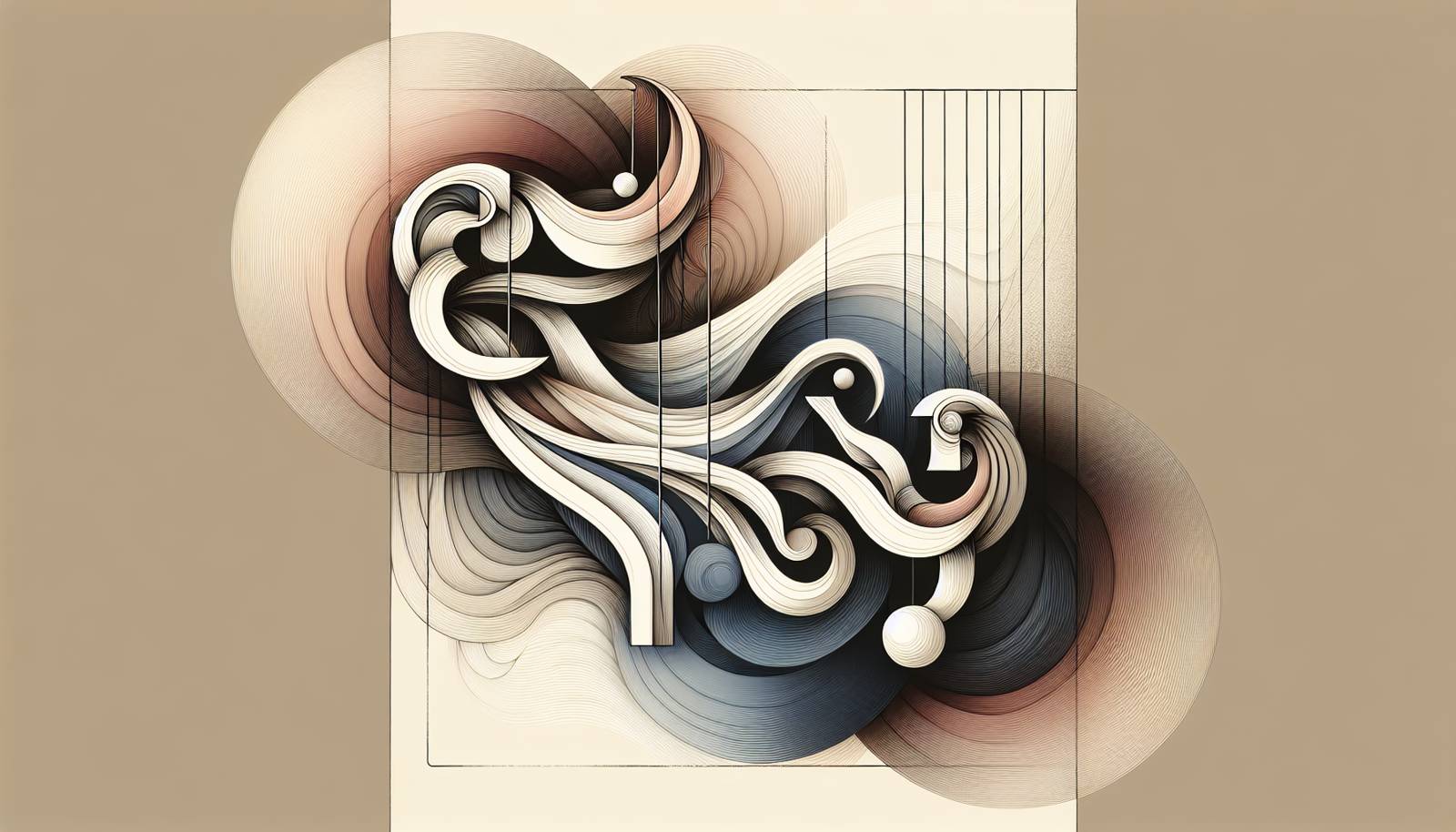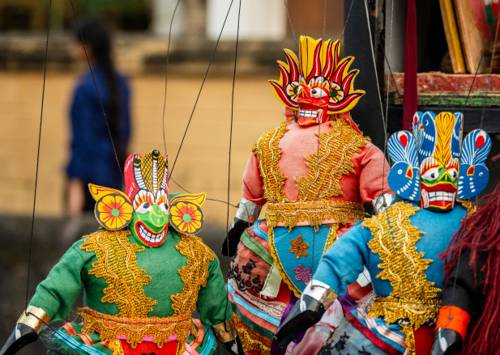
FAQ About The Role of Traditional Puppetry in Modern Theatre

What is traditional puppetry and how is it defined?
Traditional puppetry is an ancient form of performance art where stories are told through the manipulation of puppets. These puppets can be hand-operated, strings-operated (marionettes), or rod-operated, and are used to bring stories to life using movement and voice. Styles and techniques vary globally, reflecting cultural stories and folklore specific to regions.

How does traditional puppetry contribute to modern theatre?
Traditional puppetry contributes to modern theatre by providing a unique visual and narrative element that enhances storytelling. It introduces diverse styles of expression, imaginative visuals, and can convey emotions and stories in a distinctive manner that enriches the theatre experience. Additionally, traditional puppetry often invites audiences of all ages, broadening audience engagement.

In what ways do modern theatre productions incorporate traditional puppetry?
Modern theatre productions incorporate traditional puppetry in several ways, such as using puppets to represent fantastical creatures or characters, enabling interaction with live actors, or integrating those with modern technology for added visual effects. Puppetry can be central to the story or serve as an auxiliary element that enhances the visual dynamism of a production.

Can you give examples of modern theatre shows that use traditional puppetry?
Examples of modern theatre shows that use traditional puppetry include "War Horse," which uses life-sized horse puppets, "The Lion King" with its innovative use of both puppetry and mask work, and "Avenue Q," a comedy that utilizes puppets much like those seen in traditional ventriloquism combined with live actors portraying various characters.

What cultural influences can be seen in traditional puppetry used in modern theatre?
Cultural influences in traditional puppetry seen in modern theatre include motifs from Balinese shadow puppetry, Japanese bunraku, and Italian commedia dell'arte. Each brings unique aesthetics and storytelling techniques that enrich the cultural tapestry of a performance, allowing stories to be told with depth and cultural nuances specific to these traditions.

Is traditional puppetry considered an art form in modern theatre settings?
Yes, traditional puppetry is considered a valuable art form in modern theatre settings. It combines artistry, craftsmanship, and performance skills, offering a versatile method of storytelling that is respected for its ability to bring inanimate objects to life in profound and expressive ways.

What challenges do puppeteers face when integrating traditional puppetry into modern theatre?
Puppeteers often face challenges such as maintaining the authenticity of traditional techniques while making them relevant to contemporary audiences, integrating puppetry seamlessly with live actors, and sometimes working within the technical and spatial limitations of modern theatre environments. Balancing these elements effectively requires creativity and skill.

How has traditional puppetry evolved with the use of modern technology in theatre?
Traditional puppetry has evolved significantly with modern technology, incorporating elements like digital animation, sophisticated lighting, and sound effects to enhance the overall performance. While maintaining traditional techniques, these technological advancements help create more immersive and engaging stories by blending the old with the new.

Are there educational programs that teach traditional puppetry within modern theatre contexts?
Yes, many educational programs and workshops offer training in traditional puppetry within the context of modern theatre. These programs often cover various aspects such as puppet-making, performance skills, and integrating puppetry with modern storytelling techniques. Institutions like The Royal Central School of Speech and Drama in the UK offer specialized courses in this field.

What role do puppeteers play in the production of modern theatre shows?
Puppeteers play a crucial role in the production of modern theatre shows, acting as both designers and performers. They bring characters and narrative elements to life, often working closely with directors and actors to ensure that the puppetry aligns with the overall vision of the show. Their expertise in movement and storytelling is essential to integrating puppetry seamlessly into live performances.

How does traditional puppetry influence storytelling in modern theatre?
Traditional puppetry influences storytelling by offering new dimensions to narrative exploration. It allows stories to be told in ways that may not be possible otherwise, through symbolic movements and expressions unique to puppets. This form of storytelling can offer metaphoric and abstract interpretations, enriching the narrative depth and creativity of modern theatre presentations.

What are some techniques that have been adopted from traditional puppetry into modern theatre?
Techniques adopted from traditional puppetry into modern theatre include shadow play, which creates intricate silhouettes to convey stories, syncopated movements that enhance rhythmic and visual storytelling, and articulated puppetry that allows more human-like or animalistic expressions. These techniques are often combined with modern technology for enhanced effects.

How does traditional puppetry appeal to a modern audience?
Traditional puppetry appeals to modern audiences through its nostalgic charm and unique storytelling ability. In a digital age, the tangible craft of puppetry offers a tactile and engaging experience. It often evokes curiosity and wonder, providing an alternative to the heavily digitalized forms of entertainment prevalent today, and resonates with audiences seeking more authentic and direct experiences.

Is puppetry in modern theatre limited to children's performances?
No, puppetry in modern theatre is not limited to children's performances. While it is popularly associated with children's stories due to its visual appeal and accessibility, it is also widely used in adult theatre for a range of genres, from comedy to drama, often exploring complex themes and narratives that appeal to mature audiences.

How does puppetry in modern theatre impact audience engagement?
Puppetry in modern theatre can significantly enhance audience engagement by drawing viewers into the story through striking visual elements and the dynamic interaction between puppets and live actors. The uniqueness and creativity inherent in puppetry capture audience attention, stirring emotional reactions and encouraging interpretative thinking and personal connection with the story.

Can traditional puppetry be found in multimedia modern theatre productions?
Yes, traditional puppetry can often be found in multimedia modern theatre productions where it is combined with other art forms like film, animation, and digital projections. Such integrations expand the storytelling potential and engage audiences in multi-sensory experiences, merging the old-world charm of puppetry with new-age digital artistry.

Do traditional puppetry performances vary across different cultures in modern theatre?
Yes, traditional puppetry performances vary widely across different cultures, each bringing its unique techniques, styles, and storytelling traditions to modern theatre. These diverse cultural interpretations provide rich, varied, and inclusive theatrical experiences, reflecting a global heritage of storytelling through puppetry.

What are the environmental considerations of using traditional puppetry in modern theatre?
Environmental considerations include the sustainable use of materials for puppet-making, as well as the transportation and storage of puppets which can be resource-intensive. Many modern theatre companies are increasingly aware of these factors, opting for eco-friendly materials and practices to reduce the environmental impact of their productions.

How does the craftsmanship involved in puppetry influence modern theatre design?
The craftsmanship of puppetry influences modern theatre design through its emphasis on detail, functionality, and artistry. Puppets often require intricate construction and unique designs, which can inspire the overall aesthetic of a production, influencing set, costume, and character design to create a cohesive and immersive environment.

What potential future trends might we see in the role of puppetry within theatre?
Future trends in the role of puppetry within theatre may include increased integration with virtual reality and augmented reality technologies, offering new hybrid forms of performance. There is also a growing interest in interactive puppetry where audiences can engage directly with the performance. The continuing fusion of traditional artistry with cutting-edge technology could push the boundaries of how puppetry is used in narrative storytelling.
